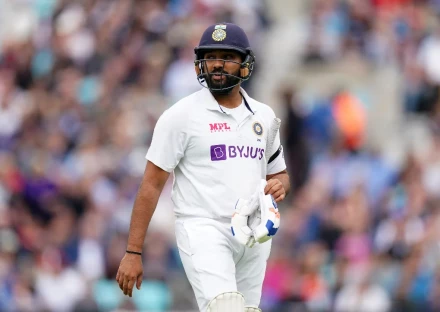Cricket News: India should have different teams for the white and red ball format
When the Indian cricket team crashed out of the T20 World Cup after their humiliating loss to England in the semi-finals, there was one common thread of criticism that was levelled at them – that they didn't play the attacking cricket needed to be successful in the tournament
 Image credit: PA Images Rohit Sharma should follow Joe Root's approach of not playing T20 Cricket
Image credit: PA Images Rohit Sharma should follow Joe Root's approach of not playing T20 CricketCommentator Harsha Bhogle termed India's style of play 'conservative'. In contrast, Michael Vaughan, the former England captain, said he was surprised at the lack of intent they showed despite the obvious talent in the squad.
It also led to calls that India should focus more on building different squads for different formats, as there was too much overlap between the Test and ODI/T20I squads.
A quick look at the number of all-format players in India has backed up that argument. Rohit Sharma, Virat Kohli, KL Rahul, Rishabh Pant, Ravindra Jadeja, Mohammed Shami and Jasprit Bumrah are consistently picked across formats.
That's seven players who are expected to play in all three formats. And it runs the risk of spreading them thin.
The powers that be will doubtless counter the argument with the fact that players are given consistent breaks, and thus workload management is done.
But the number of breaks comes at a cost – India's core players, more often than not, don't play together, except in big tournaments.
That would be less of an issue if India had more players specific to certain formats. And a look at other countries in this regard backs that up.
Take a look at England, for example. In their World Cup-winning squad, only Sam Curran, Chris Woakes and, to an extent, David Willey and Mark Wood are all-format players.
Ben Stokes was one until recently but chose to step away from ODI cricket to ensure he focused more on Tests, having been named Test skipper.
The same is true for Australia, where only David Warner and the pace trio of Josh Hazlewood, Pat Cummins and Mitchell Starc are regulars across formats.
Otherwise, their white-ball core consists of players like Aaron Finch, Glenn Maxwell, Marcus Stoinis, Tim David, Adam Zampa and Mitchell Marsh – none of whom are in the scheme of things for Test cricket.
It's an approach that makes sense for two reasons. One, the number of cricket matches has only increased over the years.
Thus, retaining the same core of players across formats makes no sense and will lead to player burnout and injuries.
Secondly, the skills required to succeed in white and red-ball cricket are markedly different. And if a player possesses the skills to achieve in one format, it's better to limit them to that format.
England have Joe Root, Ben Foakes, James Anderson and Stuart Broad as Test-only specialists – Australia prefers keeping the likes of Nathan Lyon and Marnus Labuschagne away from the game's shortest format.
As the cricket calendar continues to expand and players continue to acquire specialized skills for their preferred formats, keeping different squads for different formats makes more sense.
संपादक की पसंद
- 01
Indian Premier League: आईपीएल नीलामी में दसुन शनाका को नही मिला कोई खरीददार
- 02
SA20 League: दो दिन बाद शुरू होगी SA20 लीग, जानिए स्क्वॉड और स्टॉफ
- 03
India vs Sri Lanka: सूर्यकुमार यादव और अक्षर पटेल ने विराट कोहली-रवींद्र जडेजा के करियर पर लगाया सवालिया निशान?
- 04
FA Cup: ग्राहम पॉटर और उनकी चेल्सी टीम को करिश्में की जरूरत है
- 05
Cricket News: आवेदन की अंतिम तिथि 26 जनवरी है; महिला IPL के लिए पहली नीलामी फरवरी में होगी